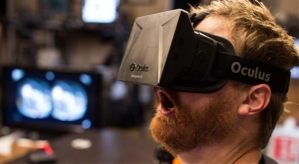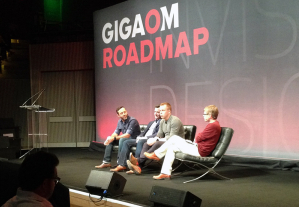
With the explosion of wearable computing products like the Fitbit and rapid advances in virtual reality devices like the Oculus Rift, technology designers have a golden opportunity to add huge value to the next wave of innovative new products that will reshape how we experience the world.
That's the consensus opinion from a day-long set of presentations and discussions at the Gigaom Roadmap 2014 conference held yesterday at The Jazz Center in San Francisco. The gathering featured top technology designers from around the world and was surrounded by an air of optimism over the opportunity for taking technology to the next level.
"Technology makes it happen and design makes it more relevant," said John Maeda, Design Partner for Kleiner Perkins Caufield & Byers, who was the kickoff speaker at yesterday's event.

The process of making technology more relevant is the biggest challenge facing designers today, based on the opinions of the many speakers at Gigaom. Consumer expectations in particular are very high and this is forcing designers to address a multitude of issues in a short space of time. "Design is not art, it's problem solving," said Jon Wiley, Lead Designer for Google.
Perhaps the biggest current design challenges are in the wearable computing market. A panel of three wearable company founders shared their experiences during the conference session.
According to Stephen Lake, the creator of a gesture-controlled armband called Myo, the goal is for wearable computing devices to understand what we are all doing right now. "Wearables are part of this broader movement to have more sensors around us," Lake explained.
The wearable industry is also struggling with how to marry technology with fashion, as explained by Stephane Marceau whose company - OMsignal - makes a new line of connected clothing. His product can provide a wide range of instant data, ranging from heartbeats per minute to your breathing rate, and the company recently signed a deal for cross-marketing with Ralph Lauren.
Marceau, who admitted that neither he nor his co-founder were from the fashion industry, said that his decision right now is to "go slow" in design until they get a better read on consumer tastes. But he remains optimistic that his products will become widely accepted. "We see a world where you go into a clothing store and you won't even have to ask. It will be a connected object," said Marceau.
He was joined on the panel by Tim Roberts of Fitbit, whose wearable wrist devices that monitor activity, food, exercise, weight, and sleep have become one of the most popular mobile technologies on the market today. He cautioned his colleagues not to create products too complicated that they will turn off buyers. "We don't want to overload our devices," said Roberts.
The conference also featured an appearance by Philip Rosedale, the inventor of Second Life, an extraordinarily popular online virtual reality world that currently has over one million users. Rosedale has started a new company called High Fidelity that uses the Oculus Rift eyewear (which is now owned by Facebook) to transform a conversation between two glasses-wearing humans into a dialogue between avatars (cartoon representations of real people).
Perhaps even more boundary-breaking was a presentation by Aisen Caro Chasin, a researcher from Parsons The New School for Design. Her design concepts focus on what she calls a "sensory pathway for the plastic mind." The prototype devices she showcased at Gigaom yesterday included an MP3 player that streams music through your teeth, a wristwatch that sprays scents at pre-set intervals to communicate the time (mornings smell like coffee), and headphones that use ultrasonic waves which enable the blind to "see" objects in front of them.
Many of the panelists talked about how Apple has become widely viewed as the "gold standard" when it comes to technology design. "When people say 'we're going to copy Apple,' you're going to need 30 years to catch up," said design analyst Maeda. Based on a number of the ambitious ideas and concepts offered yesterday, that gap may be finally starting to close.







